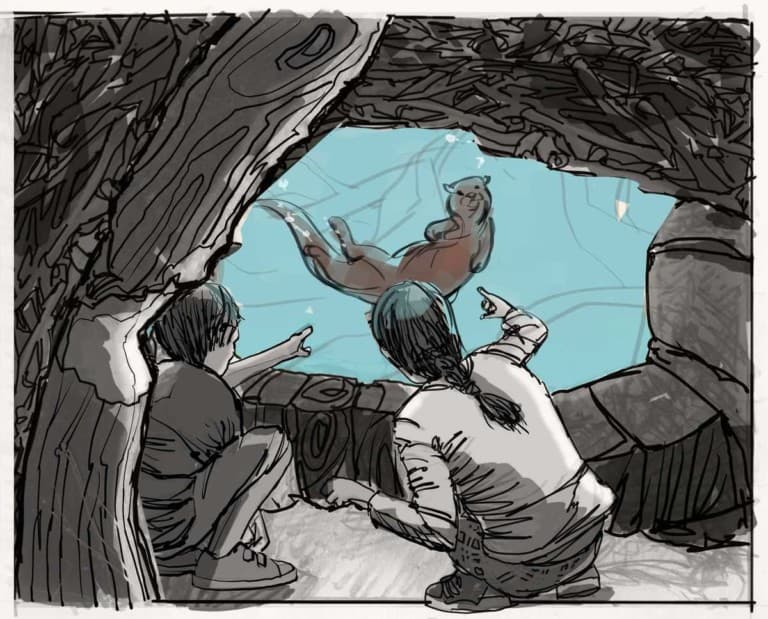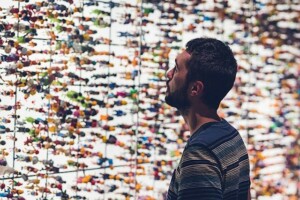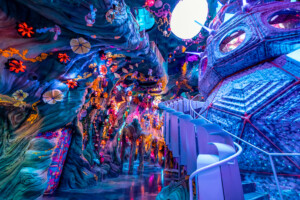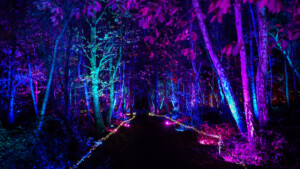This past November, project team members from St. Louis Aquarium at Union Station went to inspect a key ingredient of the Aquarium; the acrylic panels which had been a year in the making.
When guests visit the St. Louis Aquarium at Union Station, the goal is for them to feel a connection to the aquatic world that inspires them to do at least one thing to protect it. In order to achieve this inspirational connection, we have to help them experience the aquatic world in ways that they have never done before. How? The closer to a natural experience, free of any barriers, the better chance we have for them to connect to the unique inhabitants of the Aquarium.
See also: Why it’s time to bring the wonders of an Aquarium to St. Louis, Missouri
While we can’t completely recreate the natural environment, we can give the perception that there are very few barriers between the guests and the ocean and freshwater habitats that we are recreating. We can make them feel immersed in the habitats and in the Aquarium.
Build the acrylic panels
Let’s be honest here though; barriers are important, especially in an aquarium where there are millions of gallons of water and hundreds of sharp teeth in the mouths of the inhabitants of that water. At the end of the day, the care and well-being of our guests, employees and animals depend heavily on the hundreds of thousands of gallons of water staying exactly where its supposed to; within the exhibits.
So how do we maintain barriers while making you believe they aren’t there? One way is to make them crystal clear. Enter acrylic.
Within the St. Louis Aquarium at Union Station, there are 22 custom-built acrylic panels. These range in size from 3 feet by 3 feet to 16 feet by 18 feet. Some of these panels are 6” thick. These acrylic panels will provide the viewing opportunities into some of the unique exhibits within the Aquarium and, as a result, must be built to specific parameters. The margin of error is less than 0.25 of an inch.
See also: How to build a 21st Century aquarium (inside a 19th Century National Historic Landmark)
Acrylic panels are used in applications like this because they weighs less and can withstand greater pressure than glass while still maintaining crystal-clear visibility. As this is a very niche area, there are less than a handful of manufacturers that can provide panels of the size we needed.
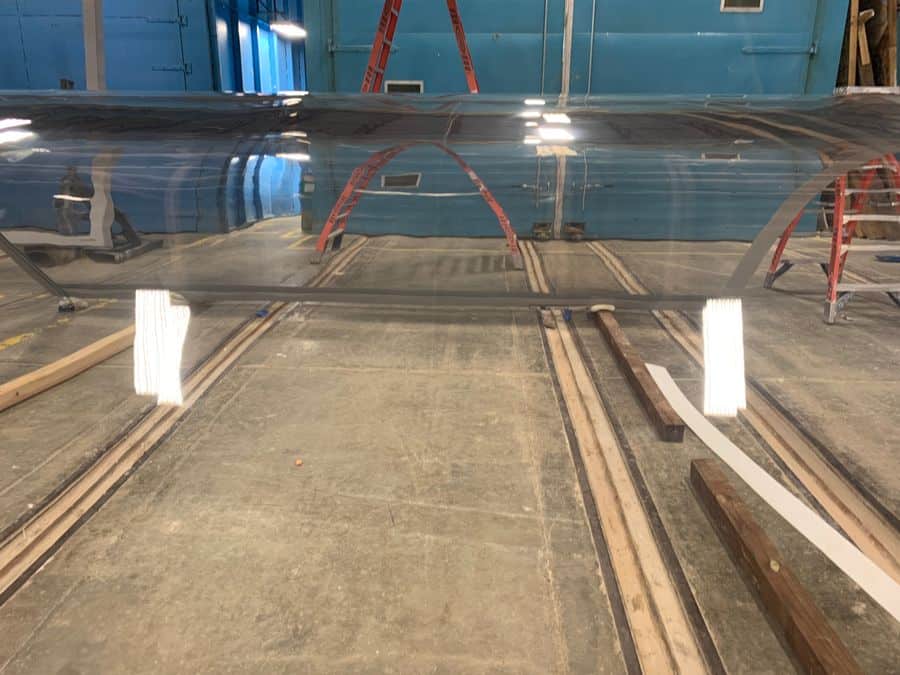
Evaluating the manufacturers
Approximately a year ago, in fall of 2017 (two years before opening), the team started the process of evaluating each of the manufacturers that expressed interest in supplying these panels. Among the things that we looked at were the quality of their previous work, their ability to meet our design specifications, ability to deliver the panels when and where we needed them, the installation process, their warranty and response abilities, and cost. At the end of the day, Reynolds Polymer Technologies was selected as the vendor that would best support this project.
See also: Testing the waters: benchmarking with the St. Louis Aquarium at Union Station team
From there, detailed drawings were created, specs confirmed, and Reynolds began casting the panels. To drastically over-simplify the process, these acrylic panels were made by building a mold, pouring the liquid polymer into that mold, baking it until it set, then polishing. Our panels were also made in two different locations. Those less than 4-inches thick were made in one facility while anything greater than that was made in another.

The team gets ready
Fast forward one year and the panels are ready and in one location. Yes, you read that right – it took a year to get all of the panels manufactured. Before they could ship them though, the panels needed to be inspected. This past November a team headed to Grand Junction, CO to do just that.
The inspection team was comprised of representatives from all the key stakeholders within the Aquarium:
- Justin Stichter and Andrew Schumacher of PGAV Destinations were there to confirm the panels met the design specifications the Aquarium required;
- I was there from zoOceanarium Group to confirm the panels met operational requirements;
- Shawn Brinker of McCarthy Building Companies was there to coordinate the delivery schedule and process; and
- Chad Smith from Lodging Hospitality Management (LHM) was there to make the final decision on whether each panel was acceptable.

Inspecting the acrylic panels
When inspecting each panel, the team looked at a number of different characteristics:
- SIZE. We needed to make sure the panels were the correct length, height and width. This meant they would fit within the space allocated for them. We also wanted to make sure the material was strong enough to support the water it would be containing. Within the specifications, we allowed for very minor tolerances in length and width, thickness, flatness, and even the thickness of the corner angles.
- CLARITY. We were looking for imperfections; anything within the material that affected the clarity. Examples include air bubbles, dust or other large debris that was caught in the liquidized polymer as it set or in the bond between panels. For our larger panels, we allowed for one imperfection that was less than 0.25-inches when measured in any two dimensions within a set space limit. For smaller panels, the size of that inclusion was reduced to 0.125-inches.
- DISTORTION. We wanted to make sure that when looking through the panel, the items on the opposite side appeared true to life (and not like a fun-house mirror reflection).
We met the Reynolds team working on our panels, were given a tour of the facility and the manufacturing process. Then began the painstaking process of carefully inspecting every inch of each and every panel.
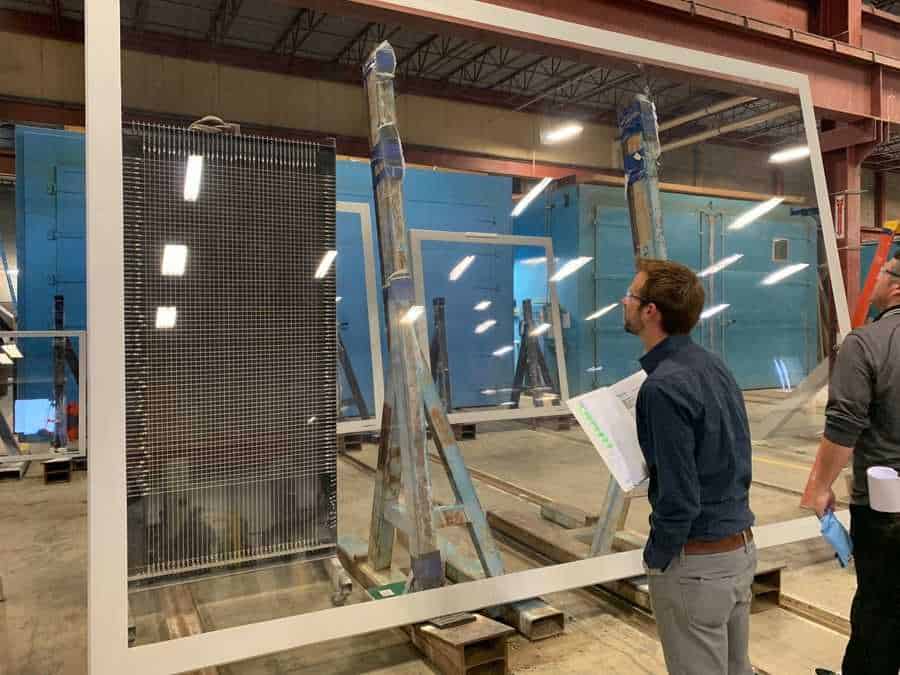
See also: St. Louis Aquarium at Union Station’s Peta Wittig on “an aquarium like no other”
The process
We found the following process to work the best for our team:
- Andrew worked with Reynolds to validate that all of the sizing was correct. The Reynolds team measured the length, height, thickness and density of each panel (they used sonar for the last one) and reported it to Andrew. He then compared these to the specs outlined on the drawings for each panel.
- Justin and I inspected each panel for clarity. Working together, we each took a side of the panel and reviewed every square inch. We found this was the easiest way to quickly determine if what we were looking at was an imperfection IN the panel or simply debris ON the panel. Any imperfections or areas that needed some additional polishing were circled with a wax pencil. This meant that the Reynolds team could easily identify and address.
- To test for distortion, a large grid panel of 1-inch by 1-inch squares was wheeled two to four feet behind the “wet side” (the side that will be touching water) of each panel. We looked at the grid from various angles from the dry/visitor side to see if any of the lines appeared uneven. We only accepted distortion that impacted less than ½ of a grid square.
Taking all of the above information into consideration, a determination was made on whether the panel was accepted or not.
Inspection complete
Six hours after we started, we had inspected all of the panels. Each one of the panels met the specifications for size, clarity and distortion. However, we did request some additional polishing just to ensure the panels were as perfect as they could be. Much of this was completed while we were inspecting other panels.
See also: The St. Louis Aquarium at Union Station: PGAV on storytelling and design
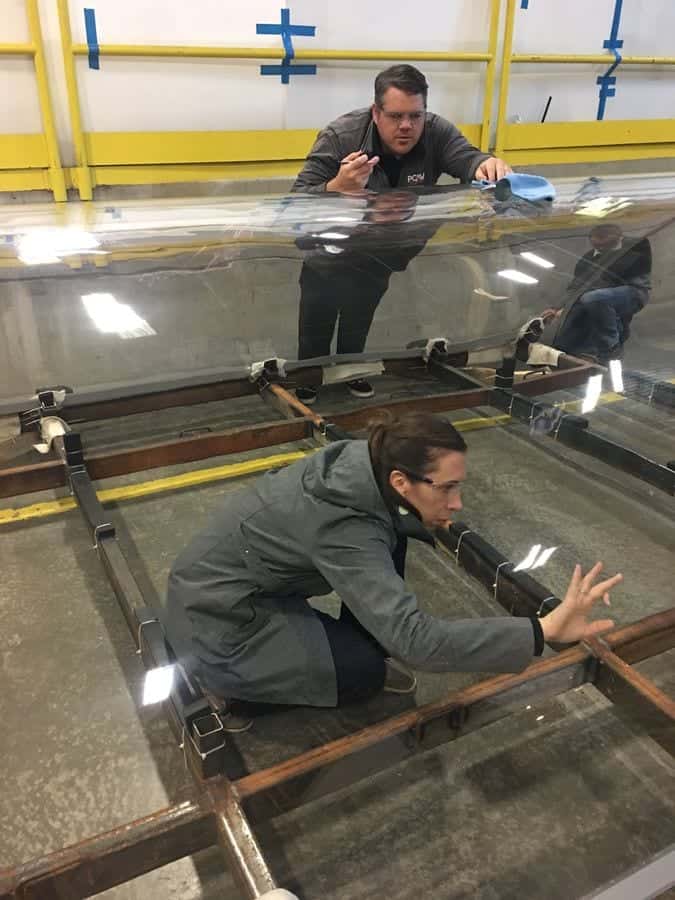
Three panels needed a bit of additional work. Within one, what appeared to be a a very unfortunate gnat had fallen into the polymer. It had then set within the panel right at viewing height. After the obligatory Jurassic Park jokes the situation clearly warranted, it was determined that the gnat was less than 0.25-inches long. Technically it fell within the imperfection allowance.
Gnaturally professional
However, Reynolds didn’t want a literal black mark in the middle of a panel any more than we did. True to their professionalism, they quickly identified and implemented a corrective plan of action. Andrew flew back to Grand Junction less than a week later to inspect the corrective works and approve the panel.
See also: The Baby Shark Dance at St. Louis Aquarium at Union Station
Within four days of that final inspection, all of the panels were loaded onto two trucks. They were then delivered to the Aquarium site. While they won’t be installed for a few months, the size of some of the panels required they be moved into the general area before further construction could continue as they are larger than the entryways. So, for these panels, the Aquarium will literally be built around them!
